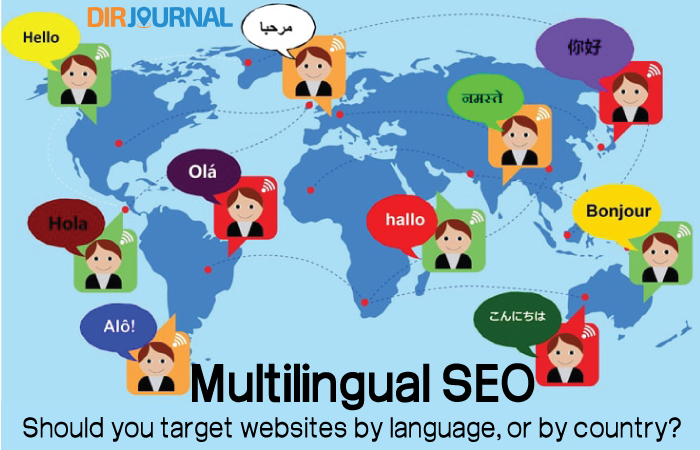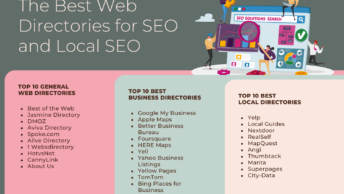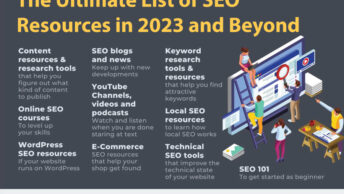It’s true that English is widely spoken these days, but when it comes to web and search engine optimization (SEO) strategy, businesses shouldn’t forget that over 50% of all Google searches are done in a language other than English. It’s easy to see why this is important for SEO strategy when trying to reach customers abroad.
When it comes to an SEO strategy for multilingual online marketing, you could focus on making a website for each different language you’re targeting, or making a website aimed at each country you’re targeting. The difference is an important one and you’ll soon see why.
SEO by Language
Creating a website for each language you’re targeting seems like the simplest way forward on the face of it, but it is likely to be less effective in the long-term.
It’s certainly faster to set-up and cheaper in the short-term, because you only need to create one website for each language to catch anyone who searches in that language, regardless of what country they’re in. So you could have an English site to catch UK, American and Australian searchers, a French one to catch French, Belgian and Swiss searchers and so on.
However, it’s not only a site’s content that search engines take notice of – they also take location into account when they’re ranking websites. Google will list sites which are closest to a searcher’s local area first in many cases, so if your site is hosted in the UK, it may be viewed by Google as less relevant to searchers in other countries, and therefore come much lower down in the search listings in Australia and America.
Another drawback to focusing on language alone is that the one-size-fits all approach doesn’t account for the way people actually use language. Just think of the differences between US and UK English, for example. The British say ‘mobile phone’ but Americans say ‘cell phone’, and you can see the implications this has for keyword selection in such a booming and competitive industry as mobile communications. Similarly, UK shoppers would search online for ‘tights’ but Americans would look for ‘pantyhose’. It’s not just the words, but the spellings too, such as color/colour, realize/realise and so on. These subtle but important differences exist in almost all cases of countries sharing a language.
SEO by Country
The other option is to optimise your websites on an individual country basis. Creating and optimizing a website for each country is obviously more time-consuming and expensive initially, but you will see better results.
An obvious example of one of the immediate benefits of this is currency. Many countries that share a common language don’t share a common currency – just look at the UK, America and Australia. If a potential customer sees prices listed in a currency that’s not their own, it can really put them off – just think about your own shopping experiences. It’s not just the currency, either. In some countries credit cards are the most common way of paying online, but in others, such as Italy, it’s third-party companies such as PayPal.
By creating a site for each country, you’ll also improve your content and branding. The differences may be very subtle, such as the photographs you choose, the news you display or the way you greet customers on your home page, but these can all have a massive impact on how customers view your company and your product.
Having a country-specific Top Level Domain (TLD) is very good for search engine rankings too. eBay is an example of a company that does this. You will notice that eBay has a different TLD for each country: such as America – eBay.com; the UK – ebay.co.uk; France – ebay.fr; and so on. These country-specific TLDs will automatically rank higher in search engines for local searches. Hosting the site in the target country will boost rankings further.
Crucially, having country-specific websites allows you to target keywords properly, taking into account important linguistic variations. You’ll also have much more of an opportunity to target long-tail keywords, such as ‘mobile phone repair Newcastle-upon-Tyne’, rather than relying on catch-all general terms.
As you can see, creating an optimised site for each country you’re targeting is the best way to compete for customers abroad and a far better approach than targeting your sites by language. However, cost and time are understandably key factors for businesses to bear in mind, and the approach is more expensive and time-consuming because each country site needs an SEO strategy and its own content specialists.
One way around this is to take a gradual approach. Add sub-domains for target countries to your site and see which ones perform well. Based on this information, you can then create full country-targeted sites, as your budget allows.
Even if your quest for world domination starts one country at a time, you’ll quickly see the benefits of localization when you see how well your country-targeted sites perform.







Thank you very much for your post. At least, I have an idea what to do now regarding our plans to create a website for the company that I’m working for. As a head manager of the promotion division, this will be surely helpful since we are planning to create a website that would cater our clients from different countries. Since we have so many options and with so many clients to attend to, creating a website per country is quite interesting. I could say that it may exceed the allotted budget for the project but I guess it would make our company more profitable and more easy to use.
wow very good point.. on how to target SEO.
I think that you should target website by countries due to the regional varieties. However there are coutries so complex like China where different cultures and languages co-exist within the same country. That is why targeting the Chinese market is so complicated.
I think it’s important to note that both are needed and should be considered. When doing a localized SEO strategy you should note the region needs. For example if you are doing Spanish for a global company, you need to address the different regions and the nuances acrosses the Spanish language to account for all the different countries you are targeting.
This is an awesome post. But i have one question please resolve it. As per the new Google Panda update we can’t use the same content. Or I need to so SEO by Country(Australia, New Zealand and USA). For this do i change the whole content or do some minor changes on content, because i website is shopping based and have around 50,000 pages. Please tell me how i’ll optimized it.
Thanks
This is an interesting topic, as you suggest using local language variation in you text such as realise rather than realize.
How every what are your thoughts if in the local country more search volume is for the global term rather an the localised one?
Interesting to hear peoples thoughts on this.
Thanks
Quite an interesting topic. Actually, I have tried a bit of both but not a combination of both linguistic and geo location. The argument remains that how many searches there are for your projected keywords in the lingo of of your targeted region. Unless, there is use of a mainstream language like Spanish, German or Arabic, it is highly unlikely to draw any major traffic. Instead country or regional targeting is likely to be more beneficial as one could simply target its keywords and ad those target locations in its content and use it in various submission to get into SERPs and draw decent traffic. Great article btw.
Thank You.